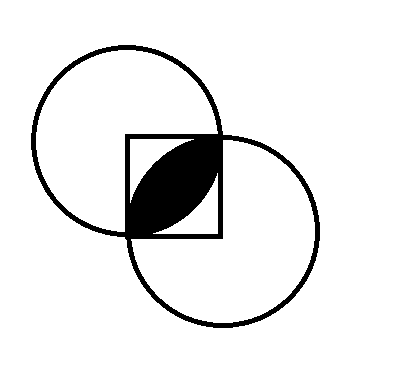Intersecting Circles
 A square with side length of 5 is drawn. Using a vertex of the square as the center and the square's side length as its radius, a circle is drawn. Using the vertex diagonally opposite of the one we just used as the center and the square's side length as its radius, another circle is drawn. Find the area of the intersection between the two circles.
A square with side length of 5 is drawn. Using a vertex of the square as the center and the square's side length as its radius, a circle is drawn. Using the vertex diagonally opposite of the one we just used as the center and the square's side length as its radius, another circle is drawn. Find the area of the intersection between the two circles.
This section requires Javascript.
You are seeing this because something didn't load right. We suggest you, (a) try
refreshing the page, (b) enabling javascript if it is disabled on your browser and,
finally, (c)
loading the
non-javascript version of this page
. We're sorry about the hassle.
Area of 1/4th of the circle - Area of right angled triangle formed by two sides of square and chord. = (1/4 x 25π) - (1/2 x 5 x 5) = 6.25π - 12.5
so, the two parts will combine. so the total are will be: 2 x (6.25π - 12.5) or, 12.5π-25
so, Answer is: 12.5π -25